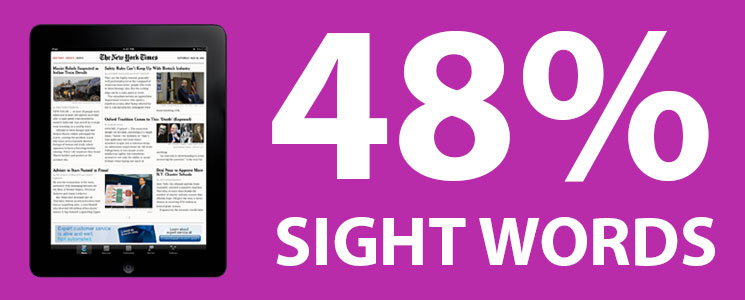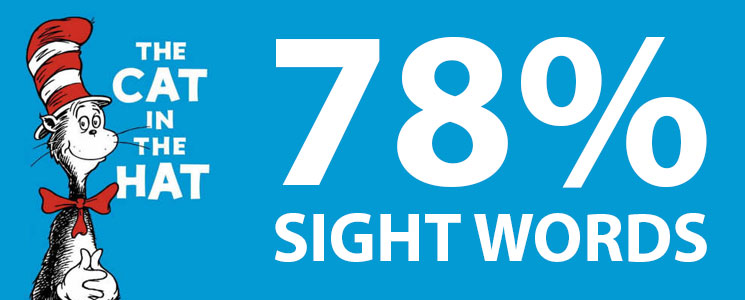The Purpose of Learning Sight Words
1. Introduction
The English language contains well over 1,000,000 words. For decades a controversy raged as to whether teaching a child to read by sight (Look-See;See-Say) or by sound (Phonetic Decoding) was the best strategy. This controversy was known as The Reading Wars. The issue was largely settled in the 1950’s when Rudolph Flesch published his seminal book, Why Johnny Can’t Read. The thesis of Flesch’s book was that Johnny couldn’t read because Johnny didn’t know phonics.
Since that time research has confirmed that phonics is an essential reading skill for the beginning reader of English to master in order to decode new words. HOWEVER, approximately 25-35 percent of English words are not completely phonetically regular. Most of these phonetically irregular words are partially decodable using phonics, but the reader will not be able to “sound out” the word correctly purely by using decoding skills. A small percentage of the phonetically irregular words are totally unable to be decoded.
Why are sight words important?
There are two types of words that we encounter as sight words or words that need to be recognized instantly. They are learned for different reasons:
- Non-Phonetic Words – words that cannot be completely accurately “sounded out” or decoded using phonics. Words such as come, eight, and through do not observe the regular decoding rules. These exceptions need to be memorized.
- High Frequency Words – words that are commonly encountered in written text. Memorizing high frequency words such as it, red, and out make reading easier and more fluid.
Sight words makes reading easier. Knowing the sight words gives children a set of friends on their reading journey.
2. Non-Phonetic Words
Non-phonetic words (often called True Sight Words) are words that cannot be decoded (sounded out) phonetically and need to be memorized. For example, consider words such as could, eight, and laugh.
As the English language has evolved the pronunciation and spelling of many words have drifted apart making these words impossible to decode using any conventional phonetic approaches. The rules of phonetics are riddled with these exceptions. Attempting to sound out a word like could is unhelpful, and thus these exceptions need to be learned as sight words.
Learning a basic set of non-decodable words also helps children recognize other, similar phonetically irregular words. For example a child who knows the sight word could more easily learn similar words like would and should.
3. High Frequency Words
High frequency words are words that are commonly used in written English. Words such as the, at, in, her, and blue. ALthough many of these words are phonetically decodable they are encountered so frequently that it is worth taking the time to memorize them by sight. This ultimately makes reading easier and more fluid, because the child can pass quickly through the side words and concentrate on less common decodable words in a sentence or story.
A small set of words makes up the majority of frequently encountered words in written English. For example the 220 Dolch sight words, make up about 50% of the words in typical written English, and about 80% of the words in children’s books. Imagine how much easier a new book is to read for a child if the child already knows most of the words.


4. Frequently Asked Questions
Q: How do sight words and phonetics work together?
A: Sight words and phonetic approaches are used in conjunction to improve reading ability. For example when a child sees a new word for the first time, they use phonetic approaches to read the word. As they continue to encounter the word, they will start to recognize the word by sight and will no longer need to sound out the word.
Leave a Reply
